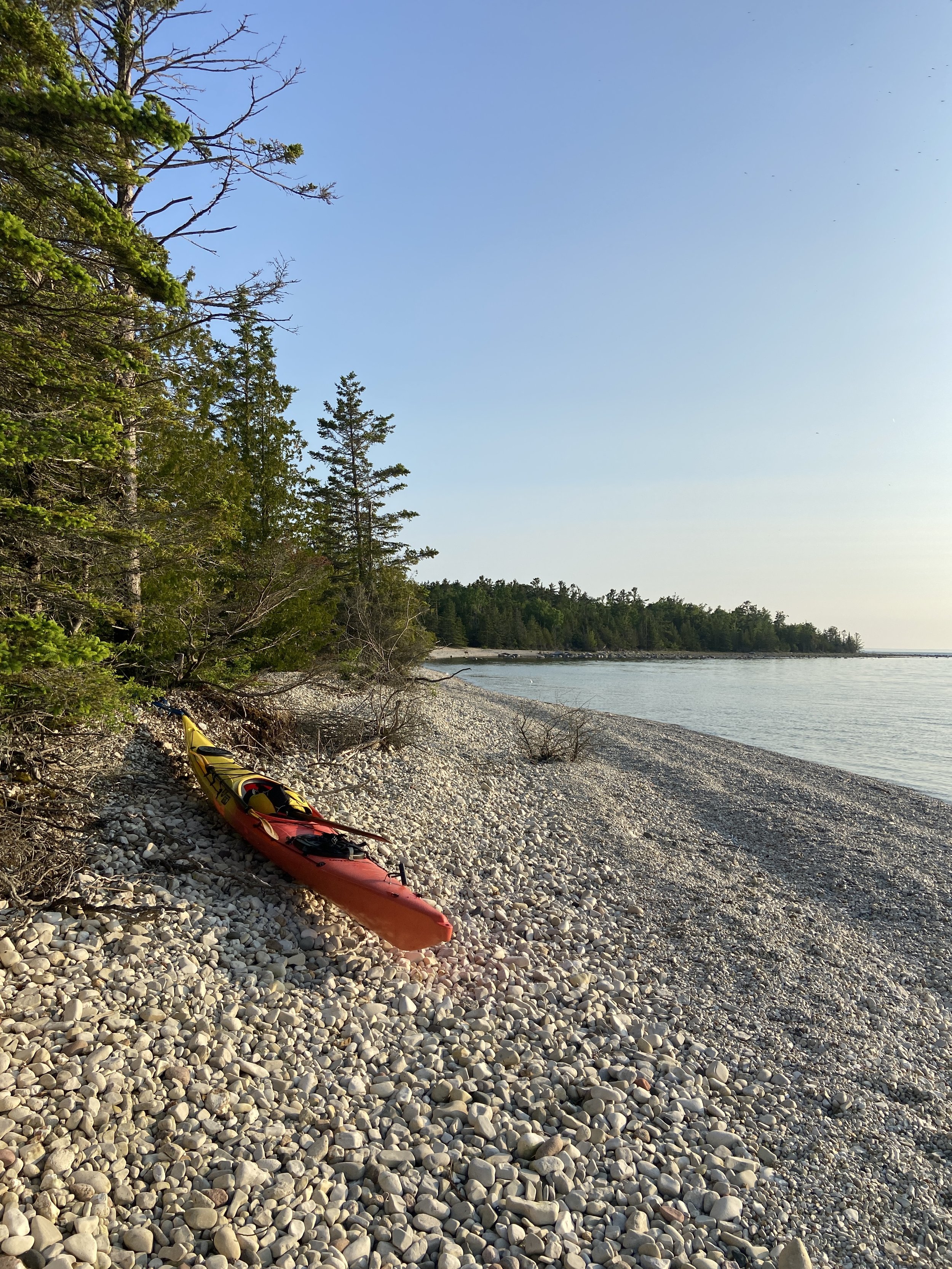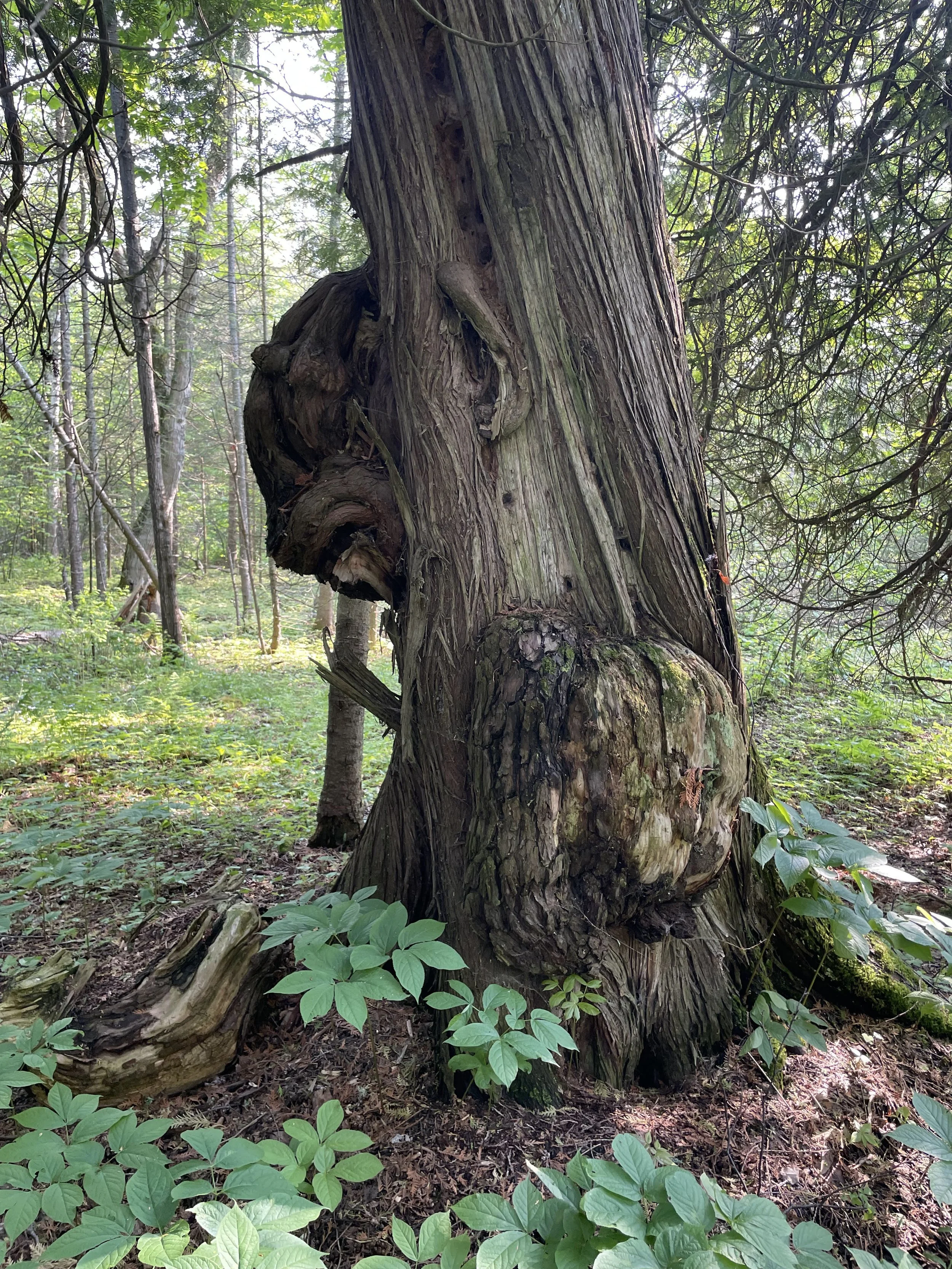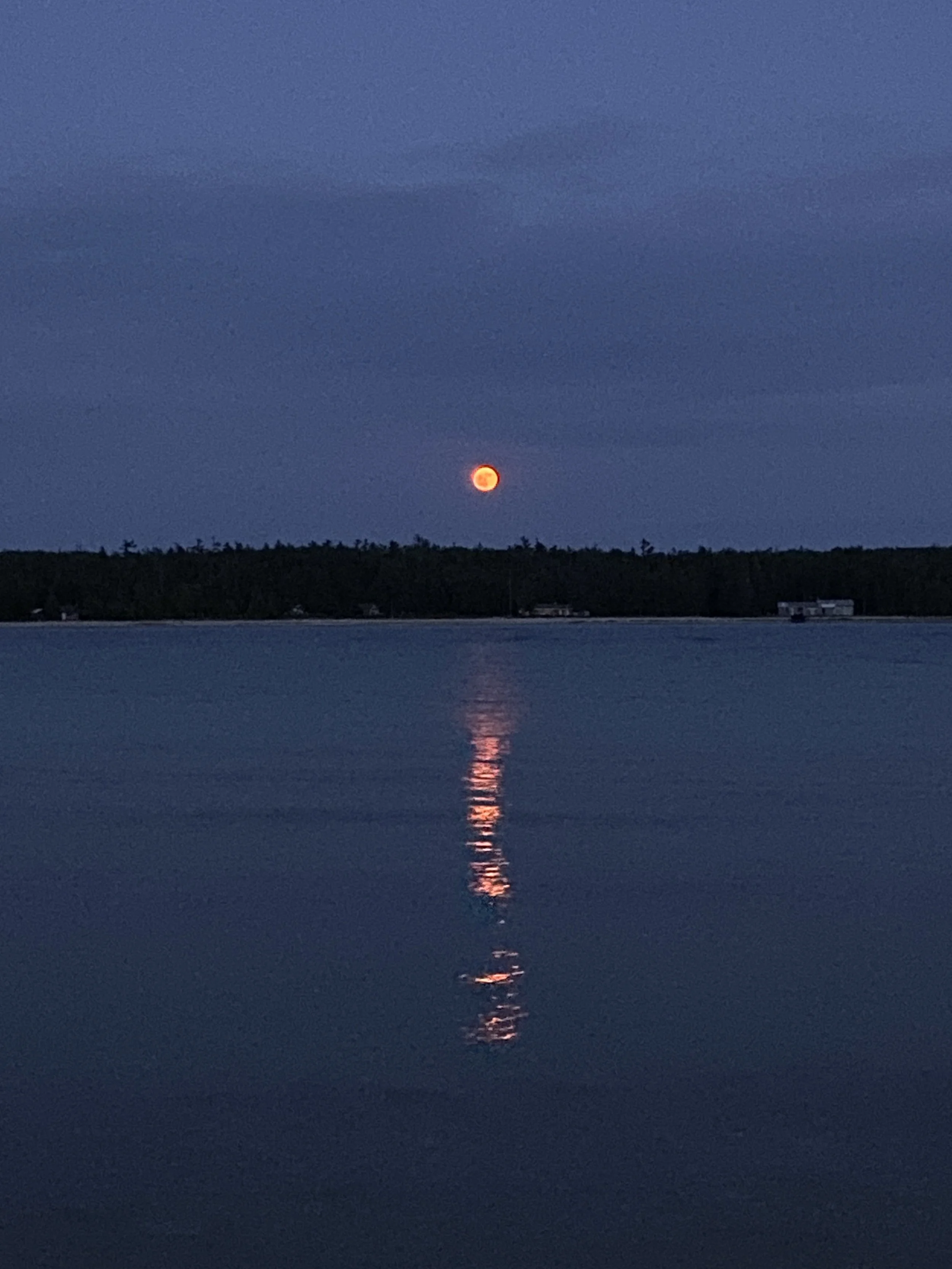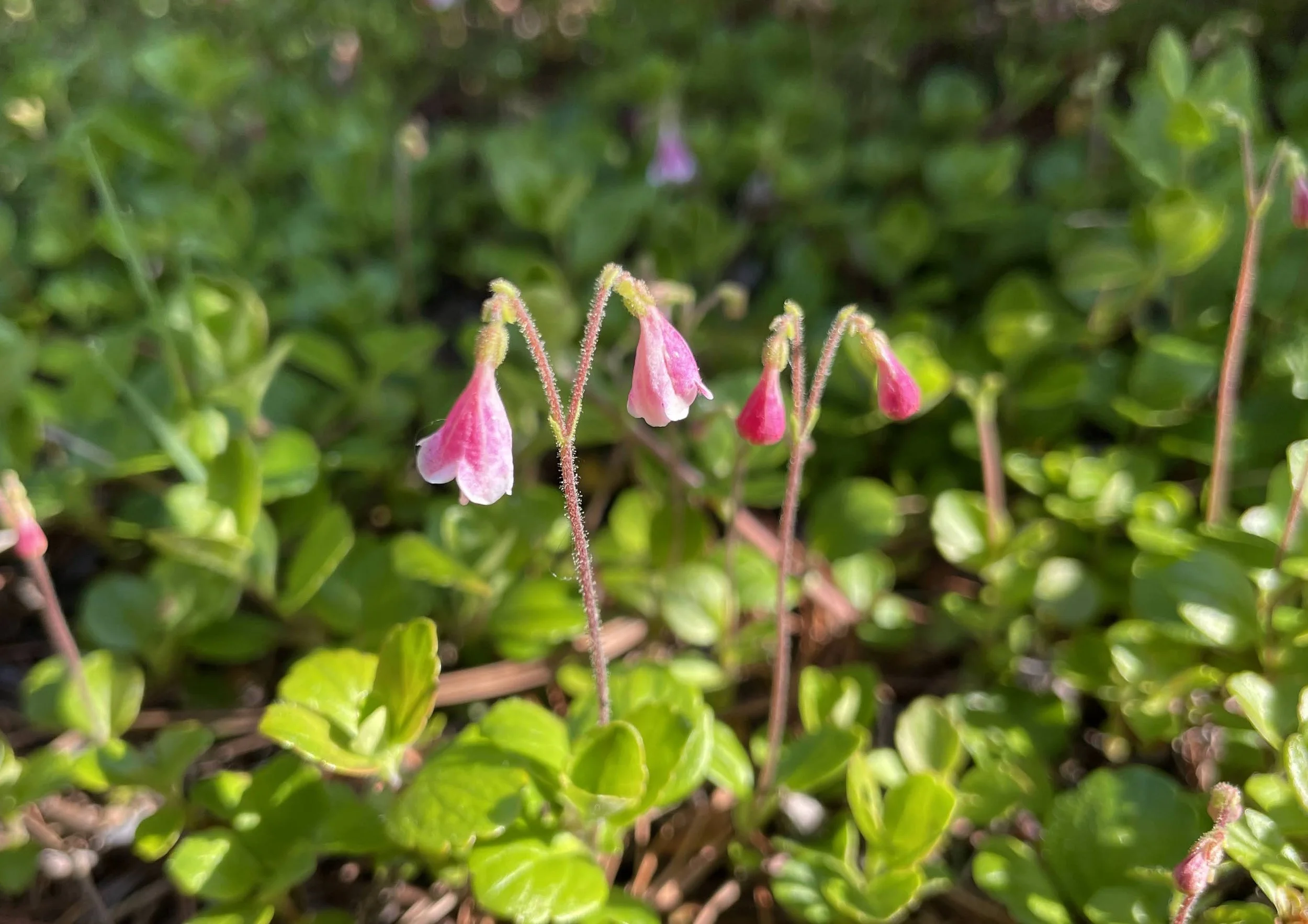Guardians of the Great Lakes: Conservation Work on Lake Huron's Remote Islands
Hidden among the vast waters of Lake Huron lie ecological treasures that few will ever witness—remote islands harboring some of Michigan's rarest species and most pristine habitats. Our recent expedition to Bois Blanc Island and Round Island revealed both the remarkable biodiversity these places protect and the ongoing challenges they face.
Huron Pines Watershed Technician/GIS Specialist Nick Theisen scans the horizon during a June expedition to Round Island, a designated wilderness area in the Straits of Mackinac.
A Journey to Hidden Wilderness
Michigan's Great Lakes islands account for almost 10% of our state's rare species and habitats despite making up only 1% of the total land area. This extraordinary concentration of biodiversity makes islands like Bois Blanc and Round Island critical conservation priorities and a focus of our latest field work.
Our team recently completed our third visit to Bois Blanc Island, where a mosaic of land ownership creates unique stewardship opportunities. Half the island falls under Department of Natural Resources (DNR) management, while the remainder is protected as Michigan Nature Association (MNA) preserve land, Little Traverse Conservancy (LTC) preserve land and private land.
During our half-day survey, we conducted comprehensive inventories across MNA, LTC and DNR properties while also assessing miles of shoreline. Our primary mission was twofold: evaluate potential piping plover habitat and monitor the effectiveness of previous invasive species treatments. While the shoreline proved to offer only marginal nesting habitat for plovers—lacking sufficient space between the waterline and forest edge—we discovered excellent stopover habitat that plays a crucial role in the species' migration patterns.
Crossing Wild Waters: The Journey to Round Island
The real adventure began with a paddle from Bois Blanc Island to Round Island. As Stewardship Project Manager Amber Hubbard recalled:
"Although the journey from Bois Blanc Island to Round Island is only about half a mile, the weather really dictates how and when we travel. We waited several hours for the winds to die down before embarking to Round Island. By 6:30pm the wind speed had lowered to ~10 mph, which met our safety criteria, but the waves were still a bit daunting to traverse. It was a white-knuckle paddle for Nick and I in our canoe while Samantha breezed alongside us in her sea kayak. Nick joked that his mind kept playing ‘The Wreck of the Edmund Fitzgerald’ as we made the 25-minute passage. Once we reached the island, we all laughed and breathed a sigh of relief. We set up camp, ate our dehydrated dinners and enjoyed the rise of the strawberry moon over Lake Huron."
Managed by the U.S. Forest Service, Round Island represents one of the most pristine wilderness ecosystems remaining in the Great Lakes. With no trails and only a historic lighthouse as evidence of human presence, the island demanded true bushwhacking navigation. Our team spent two nights camping in this remarkable landscape, where the unique geology creates distinct habitat zones: sandy beaches give way to cedar forests which then ascend 30 feet to expansive hardwood forest plateaus.
Clockwise from top left: Exploring island shorelines, a kayak pulled up onto Round Island, a giant cedar tree with burls, twinflower, Round Island Light, and the strawberry moon rises over the Straits
When Scientific Surveys Become Treasure Hunts
The island's remoteness has preserved populations of some of Michigan's most threatened species. Our surveys documented multiple populations of dwarf lake iris, a federally threatened species that serves as an indicator of high-quality Great Lakes coastal habitat. Hubbard expressed the thrill of these discoveries in her own words:
"Looking for rare species is like playing a game of hide and seek. It's a really electrifying experience when you stumble upon them, especially on these often remote and inaccessible islands. We observed several populations of dwarf lake iris around the island. We knew based on historic records it existed in many locations, but ground truthing this information is vital to researchers and land managers trying to understand population demographics and viability over time. In many spots, we noticed that the iris had expanded outside its original mapped extents. We also located a few populations that had not previously been recorded according to our data."
Beyond dwarf lake iris, our team documented ram's head lady’s-slipper and striped coralroot orchids and found the island's forests alive with the songs of migrating warblers.
Left to right: dwarf lake iris, coralroot and ram’s head lady's-slipper
The Invasive Species Challenge
Our surveys, however, also revealed concerning threats. After nearly 10 years since the last comprehensive invasive species inventory, we discovered bush honeysuckle has established dense thickets around much of the island's perimeter, representing the most significant current threat to biodiversity. We also found scattered populations of Japanese barberry in the northern hardwood areas and extensive patches of woodland forget-me-nots, an invasive species that can quickly colonize forest floors.
Surprisingly, we encountered relatively few of the "worst" Great Lakes invasives like purple loosestrife or Phragmites, suggesting the island's remoteness has provided some protection, but also highlighting how quickly aggressive species like bush honeysuckle can establish once they arrive.
Why Islands Matter
This work reinforces why Great Lakes islands deserve special conservation attention. Their isolation has allowed unique communities to persist while serving as refuge for species increasingly rare on the mainland. Yet this same isolation makes them particularly vulnerable to new threats, whether invasive species arrive by wind, water or unintentional human transport.
“It is a fulfilling experience knowing we may be some of the only people to catch a glimpse of these globally rare species in this place.”
The data we collect during these surveys directly informs management decisions across multiple agencies and organizations. From documenting the expansion of rare plant populations to mapping invasive species threats, this fieldwork provides the foundation for targeted conservation actions that will protect these irreplaceable ecosystems for future generations.
As we continue our island conservation work throughout the Great Lakes, each expedition reminds us that some of our most precious natural heritage exists in places few will ever see, making our role as guardians all the more critical. You can support this work with a donation today at huronpines.org/donate.
